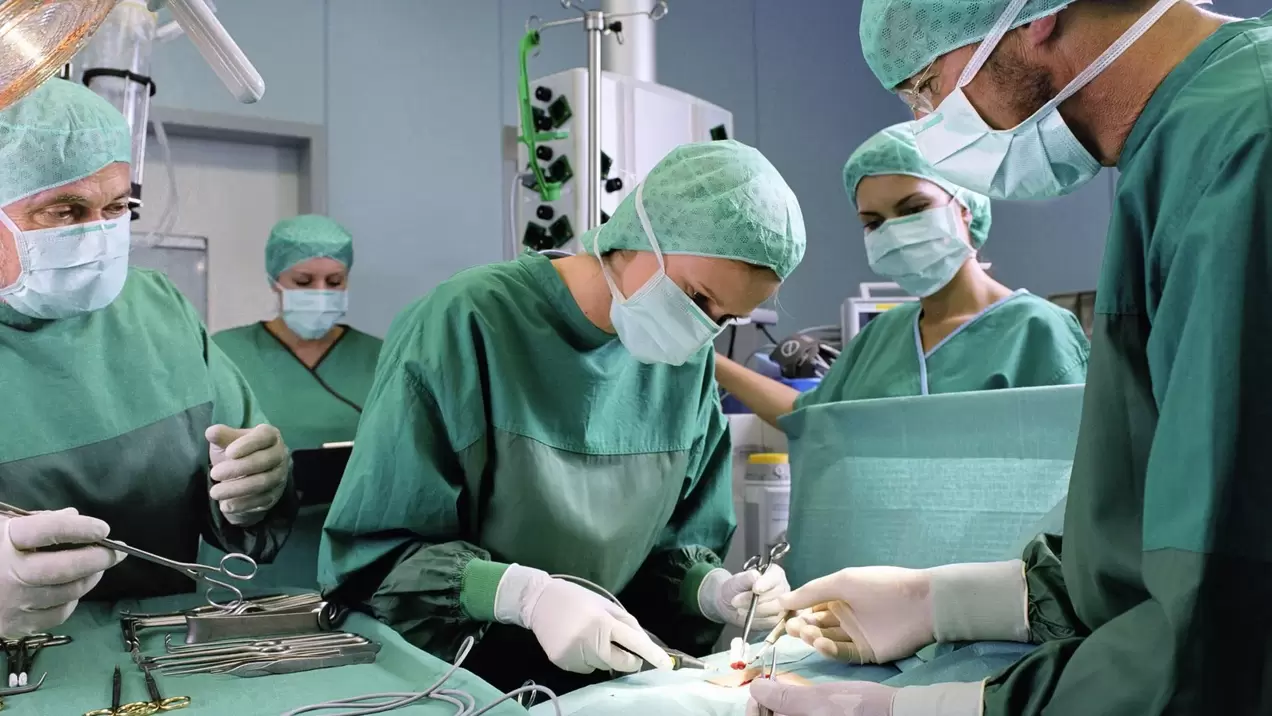Many men are dissatisfied with the length of their penis. First, they try to solve the problem at home with the help of non-surgical techniques. Some people manage to achieve the desired result. And those whose pumps and nozzles don't help, decide to take a more drastic approach and resort to plastic surgery.

Surgery allows you to enlarge and thicken your penis by extracting hidden parts of the organ to the outside.
A ligamentotomy is considered a simple and quick procedure. It is performed under general anesthesia. The doctor dissects the ligaments of the penis and releases up to 2. 5 centimeters of the hidden part of the penis. With the help of an extender, you can lengthen your penis by about the same amount. Sutures heal within 10-14 days and new ligaments fully form within 90 days.
Operating Features
Part of the penis is hidden in the pubic bone 3-5 cm. Penis enlargement surgery allows you to enlarge your penis by cutting ligaments. A biopolymer matrix is embedded in it, ensuring the fastest growth of connective tissue. Furthermore, dissection of ligaments stimulates cellular regeneration.
This allows you to form a new body position, anchored by the newly healed ligaments. After surgery, you will also have to wear extenders so the ligament stays in the desired position and does not snap back into place. Removal is only possible when new dense connective tissue develops around the ligament.
Penis enlargement surgery is also performed. They are considered simpler and less bloody because they are performed with the help of injected fillers or the patient's fat tissue.
train
Before performing a ligamentotomy, a thorough examination is required to determine possible reactions to allergens and to find out if there are any contraindications.
Patients meet with surgeons, urologists, and blood and urine tests are performed. Checks a person's blood for HIV, hepatitis, blood type, and Rh factor.
You cannot have surgery for:
- Problems of the genitourinary system.
- exacerbation of chronic disease.
- infectious disease.
- Blood clotting problems.
- Diabetes and cancer.
If all tests are normal and no contraindications are found, penis enlargement surgery can be performed at any time. Do not eat or drink before surgery.
process of procedure
In the operating room, a man is under general anesthesia. His body relaxed, he slowly fell asleep, and the doctor prepared him for surgery. Within 40-60 minutes, the doctor manages to remove the superficial folds. The very important point here is not to touch the second discount, which is more powerful.
Next, a vertical incision is made on the scrotum. The doctor follows the procedure on a monitor so you can make small incisions that will leave little scarring later.
recovery period
If mistakes are made during the procedure or the patient is not well prepared for the procedure, some complications may arise during recovery.
In the first few months after the intervention, the incision area may bleed and infection may enter the wound. In addition, patients may experience pain with erections, decreased sensitivity in the head, and swelling that lasts longer than expected.

The most common complications are:
- Tilt your penis forward or downward when you get an erection.
- Penis weakness when rubbed.
- Shrinkage, curvature, and deformation of the penis trunk.
- Erection problems.
Careful selection of clinic and surgeon is required to avoid complications. You should only trust trusted doctors who fully understand and possess the techniques of penis enlargement.
how much a member can be surgically enlarged
According to the physiology and organ structure of the patient, the penis can be increased by 3-5 cm by surgical methods. However, if you do not wear the extender during recovery, the penis will return to its normal size.
After the operation, the penis increased by 1-2 cm, with an additional 1. 5-2. 5 cm, wearing the device for about two months. Wear daily, initially for 1-2 hours, gradually increasing to 8 hours.
Depending on the chosen technology, you can change the dimensions:
- 1 cm - filler injection;
- 1. 5 cm - fat filling;
- 3 cm - Muscle implant.
When Surgical Intervention Is Necessary
Doctors do not perform surgery in all cases. If a man has a normal-sized penis but is considered small for psychological reasons, doctors will discourage him from having surgery. These customers will see live video. Once a man sees with his own eyes what is being done during surgery, he usually refuses.
But there are some situations where doctors insist on penis enlargement surgery:
- urethral defects;
- Abnormal structure or curvature of the penis;
- tissue compaction;
- anatomy;
- excess subcutaneous fat;
- Hidden or membranous genitalia.

Different Methods of Penis Enlargement Surgery and Their Costs
A ligamentotomy is a surgical procedure for male penis enlargement. Recently, this procedure has become very popular among representatives of the strong half of humanity.
The treatment caused virtually no complications, it was done quickly and the man was able to go home the day after penis enlargement surgery. However, ligamentotomy is not permitted in patients with erectile dysfunction.
The essence of this method is to cut off the suspensory ligament. According to the anatomical structure of the penis, its part is hidden in the dantian. It was kept inside because a special ligament was severed during the surgery.
This allows you to protrude the penis 1-2 cm. After the man recovered from anesthesia, a special orthopedic appliance was placed on his penis - an extender that had to be worn throughout his recovery. This will allow new bonds to be formed. As a result, the penis will always grow 3-5 cm longer.
thickening the penis with the help of surgery
In some cases, a man's penis is of normal length but needs to be corrected for its width. Doctors say it will help change a man's sex life. There are several methods of penis enlargement.
Lipofilling is a penis enlargement procedure during which fatty tissue is injected into the subcutaneous tissue. At the same time, liposuction is performed to remove fat from other parts of the patient. Fat is injected all over the penis with a special needle. This procedure thickens the penis by about 1 cm.
Such surgery is not considered difficult, and recovery from it is easier and faster than abdominal surgery.
However, the thickening effect does not last forever, so the procedure must be repeated when the organ returns to its original shape.
Muscle tissue transplantation is considered a complex operation. This requires tissue taken from the axillary fascia or abdominal wall. The tissue is applied around the penis and blood vessels are stitched to it. This manipulation can increase the diameter of the organ by 3-4 cm.

Prosthetics
Prosthetics are performed according to certain medical indicators when changing gender. For penis enlargement only, without the use of a penile prosthesis.
Penile prosthesis for irreversible impotence Causes:
- Penile atherosclerosis;
- Spongy fibrosis;
- Peyronie's disease;
- Complications after penile trauma.
For these reasons, treating the penis with classical methods does not yield positive results. Therefore, doctors decided to implant some devices in the male reproductive organs. A tubal prosthesis is introduced into the organ cavity. They are semi-rigid and hydraulic.
An elastic prosthesis is less expensive and resembles a long silicone rod that fits over the area where the spongy body is after it expands. Such prosthetics keep your penis erect.
A memory stick can also be installed. It consists of a special alloy metal rod that renders the penis erect and relaxed.
Enhanced with muscle grafts
This intervention is referred to as microsurgical intervention. It's a new and expensive procedure that thickens the penis. The operation was performed within 3 hours under general anesthesia. The surgeon cuts the penis around and pulls it off.
Afterwards, tissue taken from the axillary fascia or abdominal wall was superimposed on the entire volume. After the tissue is fixed, the foreskin is pulled back and sutured.
For the first week, the man was hospitalized under the supervision of a doctor. Pain in the groin area can last 20-25 days, so it is important to monitor your health. Disadvantages of this method can be named as invasiveness, long recovery time and possibility of side effects.











































